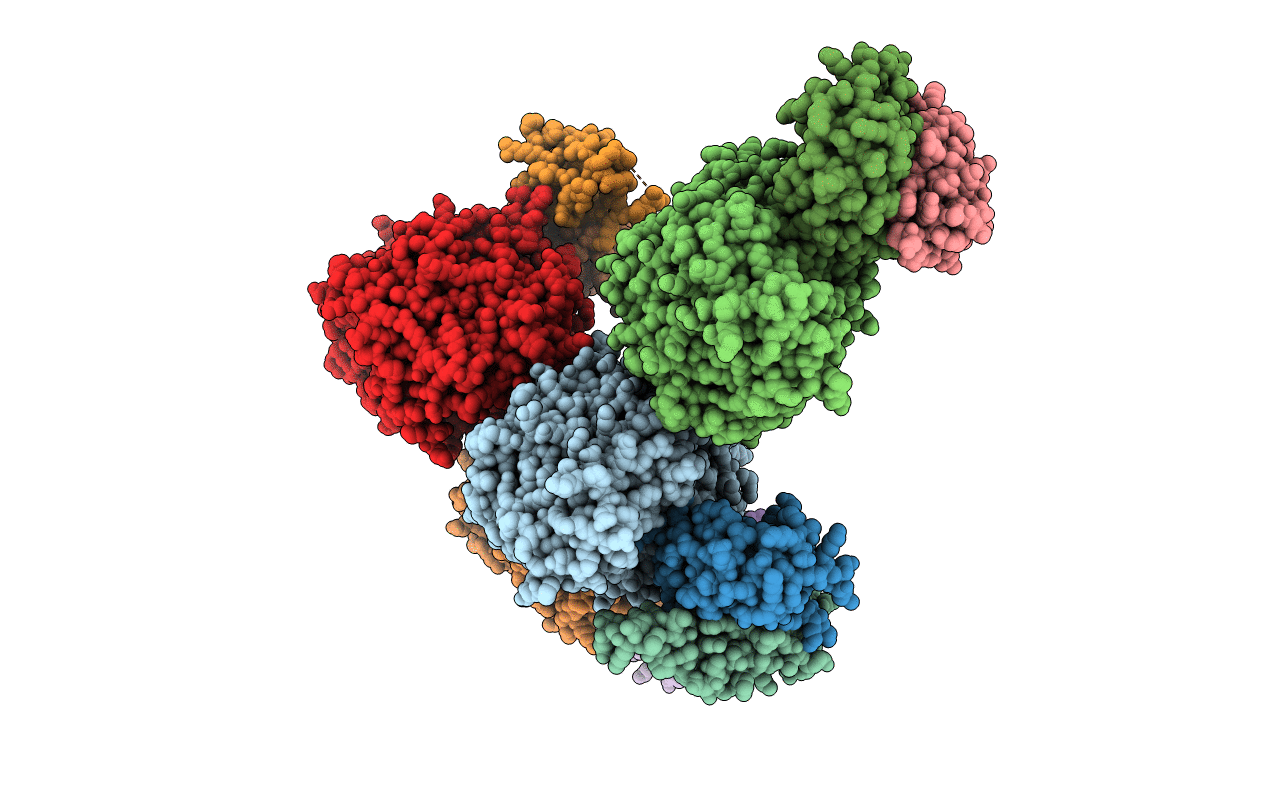
Deposition Date
2014-08-14
Release Date
2015-12-09
Last Version Date
2024-10-23
Entry Detail
PDB ID:
4UWQ
Keywords:
Title:
Crystal structure of the disulfide-linked complex of the thiosulfodyrolase SoxB with the carrier-protein SoxYZ from Thermus thermophilus
Biological Source:
Source Organism:
THERMUS THERMOPHILUS HB27 (Taxon ID: 262724)
Host Organism:
Method Details:
Experimental Method:
Resolution:
3.28 Å
R-Value Free:
0.27
R-Value Work:
0.26
R-Value Observed:
0.26
Space Group:
P 1


